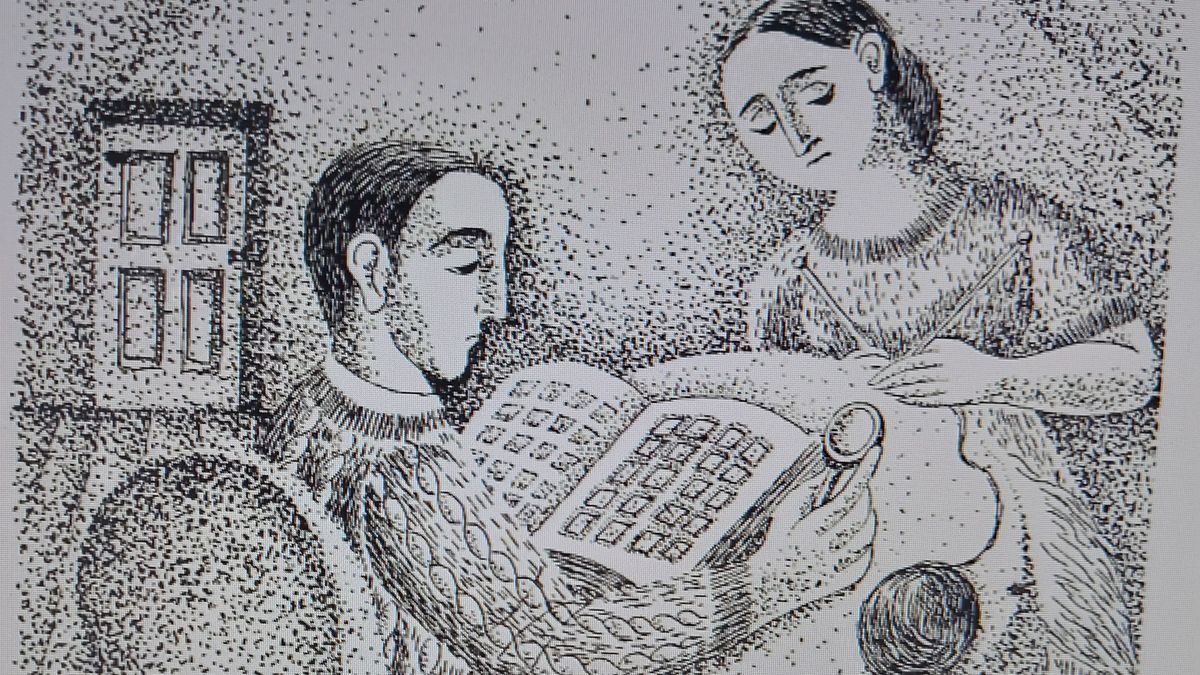In the midst of the Buenos Aires art activities, a few days were enough to corroborate, once again, that The history of Argentine art still forgets an exemplary character: Norah Borges.
The Delinfinito gallery exhibition tells the story of the landing of the avant-garde that arrived from Europe in 1924 with Xul Solar and Emilio Pettoruti. They don’t even mention Noahthe genuine protagonist of the arrival of the avant-garde in 1921. your brother Jorge Luis That same year, he wallpapered the walls of Buenos Aires with the two publications of “Prism”. The images displayed all their visual power. Along with the ultraist poetry were the lines of expressionism and cubism, the fragmented planes and the dramatic black and white. Nora Borges He was the true star of the avant-garde. He was not yet 20 years old when he began illustrating ultraist publications and established himself in Spain. There, his work continues to shine.
The Delinfinito gallery ratifies the collective memory, assigns to Pettoruti vanguard leadership. But the avant-garde images of Noah were already circulating in the magazine “Proa” and the books “Fervor de Buenos Aires” by Borges and “Propellers” of William of Torrethe father of ultraism who would marry her. Only three years later, in 1924, Pettoruti He presented an exhibition with his futuristic drawings in front of a reactionary audience. The exhibition ended with canes in the middle of Florida Street and Jose Engineers described her as “a success against the grain”. The scandal consolidated his reputation as an avant-garde. The “bourgeois”, as he called Borges to the representatives of a conservative society, had, however, accepted the modernity of the works of Norah, Ramón Gómez Cornet, Figari and then the Xul Solar.
On the other hand, also these days, in the Recoleta Cultural Center tribute is paid to Julio Cortazar with an excellent multidisciplinary exhibition: “Start of the game”. In the rooms you can see photos that show Cortazar starting from childhood, explanatory texts, phrases and poems. There are also screenings of documentaries, everyday objects and manuscripts, books and first editions.
The curator, Pablo Gianeraadopts a chronological order. “All supports are in this sample”points out Maximiliano Tomasdirector of Recoleta and also curator, to indicate that nothing is missing there. In the chapter called “The Buenos Aires years” issue number 11 of the magazine appears “The Annals of Buenos Aires” that Borges directed in 1946, when he published “House Taken”the first story of Cortazar.
The story is known. Borges He said that a very tall boy gave him a manuscript. He added that only a week had passed when Cortazar return. He then told her that he had liked the story, that it was already in print and that his sister illustrated it. But Norah Borges’s name does not appear in the exhibition, although her two printed drawings are signed and dated. Like other illustrations, those of “House Taken” they reveal a deep level of commitment to the text they accompany. Commitment that ends up subverting and at the same time hierarchizing that exercise of dependency that, usually, becomes the illustrator’s job. In the first drawing of Noahthe protagonists are inside the house. Time seems stopped while Irene knits and her brother observes the stamp collection with a magnifying glass. In another drawing the house appears, one of the window curtains is drawn while the other prevents seeing the interior.
For the look of Noahhis works no longer lack “aesthetic autonomy”nor are they merely subordinated to the texts. On the contrary, his enormous affinity with the written letter illuminates his illustrations and gives shine to the texts. The aesthetic search for Noah in this discipline and, in general, in all his art, is proven by the number of sketches and sketches, some taken up and others definitively discarded. With this desire he even illustrated the same book twice, as “Platero and I” of Juan Ramon Jimenez. Their task involves a true communion with the literary material. Furthermore, in the same magazine, “Annals of Buenos Aires”it is worth reading the lucid art reviews that Noah signed with the pseudonym Manuel Pinedo.
Then, is it the Casa Tomada, the Casa Rosada? “The theme of that story is the gradual occupation of a house by an invisible presence.”said Borges. And he did not pass a critical judgment. The writer Carlos Gamerro analyzes the political reading of the story and points out: “Cortázar is the first to perceive Peronism as the other par excellence… The Cortazarian reading of Peronism did not stop developing and elaborating, until it overlapped with Peronism itself”.
In 1946 Noah It was already consecrated. The MoMA in New York acquired two of his paintings to expand its collection and exhibited them in an exhibition of Latin American art. Among other publications, Gomez de la Serna I had dedicated a book to him. But the art of Noah had changed. The world stood still with the weight of the postwar period and the return to order, and so did his painting. The influence of De Chiricoits squares with statues of classicism and time in flight exerted a great influence.
“This persistent reference from the present to the past infuses the works of Norah Borges with peculiar poetry and charm, and places her in the ‘magical realism’ movement so attractive to idealistic spirits, eager to escape from the prosaic contemporary materiality.”wrote the professor at the University of Glasgow, Eamon McCarthyin his book “Norah Borges. A smaller, more perfect world.”quotes Julio Payrobut at the same time, rightly, he contradicts it: “Of course, Norah can never be labeled as belonging to a particular movement.”
The Malba, a museum dedicated to collecting the art of the Latin American avant-garde, does not have a single work by Norah Borges. That is to say: he does not know the artist.
This week, the Malba Acquisitions Committee reported that it has just added works by unavoidable artists to its collection, such as Gyula Kosicea cool black paint Alberto Greco and of Naomi Gersteinwhich were not in the collection. Added to them is the inevitable textile art with Grace Cutulithe Paraguayan artist Lotte Schulz who works on cow leather, and the Colombian Eduardo Ramirez Villamizar. The exhibition catalog “Third eye”curated with wisdom by Marita Garciacovers the masterpieces of the collection, among them those of Xul Solar and Pettorutiwell represented.
Nowadays, it is really strange that artists are canceled. The greed of the art market does not allow it, and the artists survive. But Paul Gauguin is a good example of cancellation. In “The New York Times” they demanded the closure of an exhibition, they reproached him for being a pedophile, for having enjoyed the favors of his Tahitian beauties in his teens.
Today, It is very difficult to investigate what vague reasons cause the cancellation of Norah.
Source: Ambito
I am an author and journalist who has worked in the entertainment industry for over a decade. I currently work as a news editor at a major news website, and my focus is on covering the latest trends in entertainment. I also write occasional pieces for other outlets, and have authored two books about the entertainment industry.




